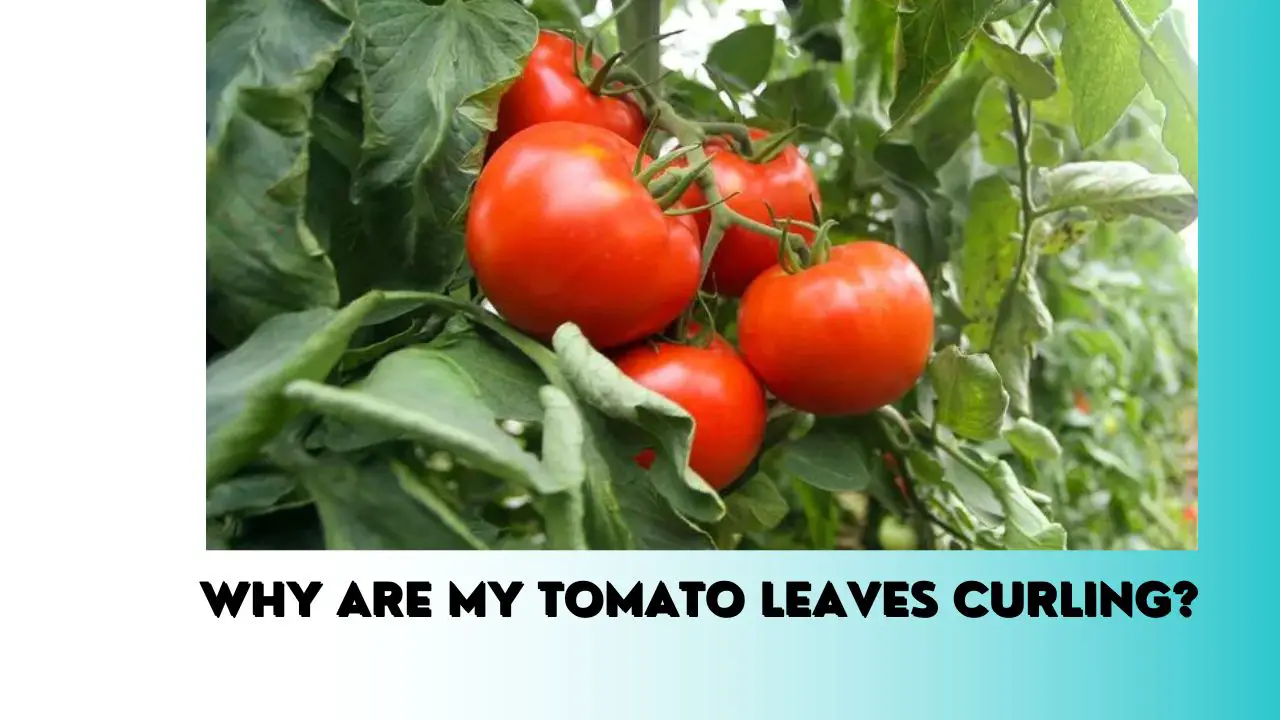Why Are My Tomato Leaves Curling, – asked by too many nowadays! Curling tomato leaves are definitely not to be overlooked. Loads of lush foliage aid in the production of all the deliciously ripe tomatoes you’ve patiently grown. However, if you notice curling leaves on your tomato plants, your harvest may be jeopardized. Curled up leaves indicate that something is wrong in the environment or within the plant itself. First, examine your tomato leaves closely to determine why they are curling. Lack of moisture, nearby herbicide use, and diseases are all common culprits. Here are the top five causes of tomato leaf curl and what you can do about them.
Why Are My Tomato Leaves Curling: Difficult Growing Conditions!
Nature can present a number of challenges to tomato plants as they grow. According to experts, the most common cause of tomato leaf curl is poor growing conditions, which is also the easiest to correct. “Leaf curl is primarily driven by hot weather, a lack of moisture, and heat stress,” says Dr. Ajay Nair, Extension Vegetable Specialist at Iowa State University. The leaf margins roll upwards in excessively hot and dry conditions. Nair claims that curling is more common on the lower leaves.
The science behind this stress-induced leaf curl reveals that it is a protective mechanism used by plants.
When the weather is hot and dry, tomato plants cannot absorb as much water as they lose through evaporation. Leaflets curl up as a result of the internal water deficit. A curled leaf absorbs less sunlight and loses less water. Leaf curling is a self-defense mechanism.
What to do: Reducing the environmental stressors that cause leaf curl can both help and prevent the problem. Begin with proper watering techniques. Aim for 1 inch of water per week for tomato plants. If plants do not receive that amount from rainfall, supplement with a hose or drip line that delivers water directly to the root zone.
To prevent disease spread, avoid overhead watering. To reduce soil moisture evaporation, add a 2-inch layer of mulch around tomato plants.
Leaf curl caused by difficult growing conditions usually resolves when conditions improve. Expect no long-term effects. A brief bout with leaf curl “does not significantly reduce plant growth or yield,” according to Nair.
Why Are My Tomato Leaves Curling: Excessive Pruning!
While pruning tomato plants can help promote fruit development, removing too much foliage at once can cause problems. As a stress response, the plant curls its remaining leaves after experiencing a sudden loss of energy-generating leaves.
What to do: The best way to treat over-pruning is to water the plant thoroughly and give it time to recover. Allow new leaves to grow. In a few weeks, the plant should be back to normal.
Why Are My Tomato Leaves Curling: Post-Transplant Shock
Moving seedlings or young starts into your garden can cause tomato plants to become stressed. Temperature fluctuations and root disturbance caused by transplanting cause some tomato varieties’ leaves to curl up in self-defense.
What to do: Plants often recover on their own from transplant shock-induced leaf curl within a couple of weeks. As your tomatoes settle in, provide plenty of water.
To avoid transplant shock in the future, slowly acclimate seedlings to garden conditions before planting, and handle the root ball gently. Do your transplanting on a cooler, overcast day, or provide temporary shade for your newly transplanted tomatoes with a tarp or other material that will block direct sunlight.
Why Are My Tomato Leaves Curling: Weed Eaters
Your tomato leaves may be curling due to a weed-free lawn. “Off target drift of herbicides such as 2,4-D or dicamba is a frequent offender,” Nair said. If weed killer is blown onto your tomato plants by the wind, the chemicals will affect foliage growth and may even kill your tomatoes. Herbicide-damaged plants have leaves that bend downward and individual leaflets that bend upward in a cup-like shape.
This differs from the tightly curled or rolled leaves that result from hot, dry growing conditions.
Herbicide-related leaf curl can also be caused by contaminated compost or mulch. According to Nair, the contamination is caused by long-lasting pasture herbicides such as picloram, clopyralid, or aminopyralid found in commercially available compost materials. When compost is spread throughout the garden, it can have an effect on tomatoes.
There is no cure for herbicide-induced leaf curl. Take a “wait and see” attitude. Some plants will be able to withstand the effects and produce a crop. Other plants will die if they do not bear fruit. Avoid using weed killers near tomato plants in the future. Make sure to purchase This differs from the tightly curled or rolled leaves that result from hot, dry growing conditions.
Herbicide-related leaf curl can also be caused by contaminated compost or mulch. According to Nair, the contamination is caused by long-lasting pasture herbicides such as picloram, clopyralid, or aminopyralid found in commercially available compost materials. When compost is spread throughout the garden, it can have an effect on tomatoes.
There is no cure for herbicide-induced leaf curl. Take a “wait and see” attitude. Some plants will be able to withstand the effects and produce a crop. Other plants will die if they do not bear fruit. Avoid using weed killers near tomato plants in the future. Make sure to purchase your compost from a reputable source and mulch your compost and mulch from a reputable source.
Tomato Pests and Diseases
Though uncommon, some viral tomato diseases may be the cause of curling leaves. If a virus is to blame, you’ll notice twisting and twining new growth instead of the curled older leaves that are common in plants stressed by harsh growing conditions. Individual new leaflets are prone to curling.
What to do: Tomato viruses are incurable. To help prevent spread, remove the entire plant from the garden. Choose newer varieties with virus disease resistance in the future.



